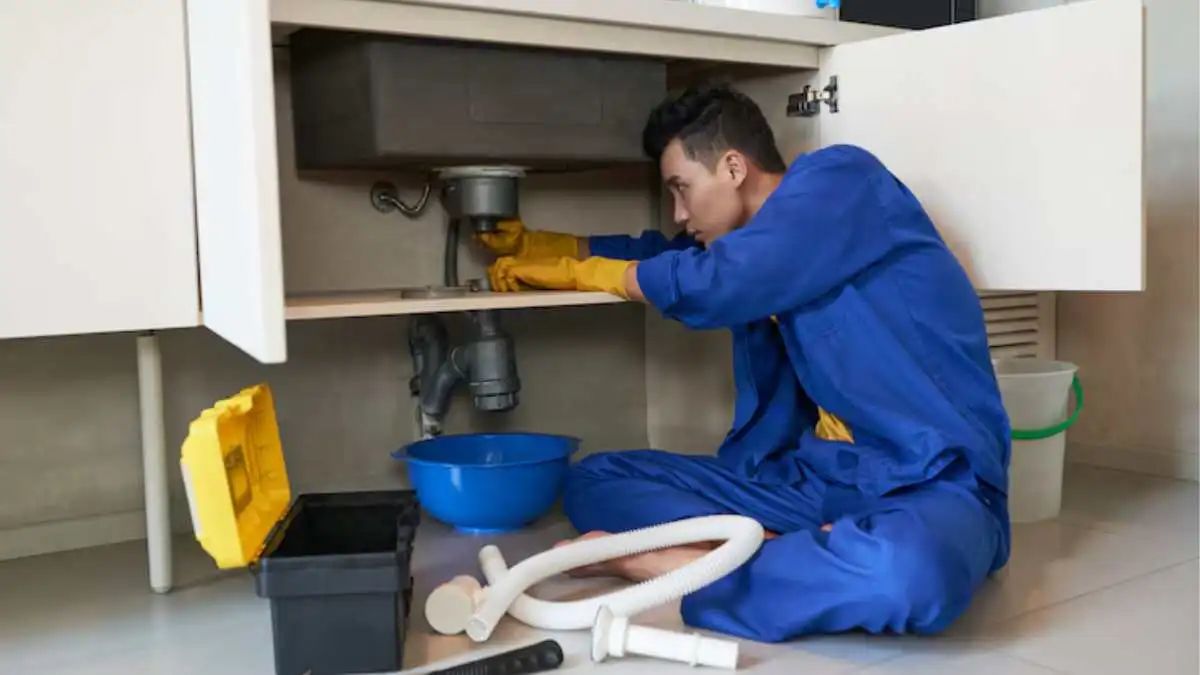HOME IMPROVEMENT
Plumber in Sunshine: Guide to Unclog a Drain Without Damaging Pipes

If you are looking for a plumber in Sunshine fixing clogged drains, you must stop. Because it is not always possible for a plumber to arrive on time until an emergency. And to avoid flooding your house, understanding an efficient DIY fix is an immediate solution.
In this blog, you will learn the possible causes of clogged drains. And some effective and safe ways of fixing a blocked drain, without damaging the pipe. If this doesn’t help, you can always call an emergency plumbing service. So, keep reading it till the end.
Reason Behind Drain Clogs
Before discovering the easy, safe, and effective DIY fixes, understanding the reasons behind blocked drains is the crucial step. Most often, not maintaining your bathroom, kitchen sink, or roof downpipes regularly becomes a leading cause. Hair, soap scum, food particles, grease, and foreign objects can nest inside the drain, blocking the water flow.
DIY Tips to Unclog a Drain Without Damaging Pipes
To start fixing the clogged drain, you need to visually inspect it first. Identifying the type of clog is beneficial to determine the best clearing action. You can either remove the drain cover, use drain snake, or trust a reliable plumber in Sunshine for professional tools.
1. Pour Boiling Water
Pouring boiling water works well on partial clogs. If the water is draining too slow, it’s a common sign of a build up. While soap scum, grease, and small food particles take up less space, dislodging them is important to prevent further problems.
How to Do It?
- Boil a kettle of water.
- Carefully pour the boiling water down the drain two or three times, waiting a few seconds between each pour.
- Run the faucet to see if the water is draining freely.
Tip:
Avoid using boiling water if you have PVC pipes, as the heat can damage the plastic. This method is also unsuitable for porcelain sinks, as these are incapable of resisting sudden temperature change. If this method doesn’t work, call the plumber in Sunshine.
2. Use Plunger
A plunger is a must-have tool for unclogging sinks, bath tubs, or drainpipes. It creates a vacuum which pushes the clog down the drain. This is particularly beneficial for partial blockages. But it is also highly advantageous for clearing the trapped air.
How to Do It?
- Firstly ensure there’s enough water in the sink or tub to cover the plunger’s cup.
- Place the plunger over the drain and it must create a tight seal.
- Push and pull the plunger in an easy motion.
- After several attempts, remove the plunger to check the water flow. Repeat if necessary.
Tip:
If the problem persists, it is best to consult a plumber in Sunshine for a comprehensive pipe inspection.
3. Baking Soda and Vinegar
If you notice foul smell from drains or minor blockages, using a mixture of baking soda and vinegar is helpful. Being safe for all types of pipes, the chemical reaction of these substances breaks down the clog easily.
How to Do It?
- Pour half a cup of baking soda followed by white vinegar in the drain.
- Cover the drain with a plug or cloth to contain the reaction.
- Wait for 15-30 minutes.
- Flush the drain with hot water.
Tip:
For persistent clogs, you must either repeat this process or combine it with the boiling water method. This combination is effective because the heat dissolves the clog while the soda mixture breaks it down easily. If the build up is too severe, a plumber in Sunshine can definitely help.
4. Manual Removal
Above all, the best way to clean the stopped drain is to remove the clog physically. When clogs appear near the drain opening, manually removing hair and debris is an easy fix.
How to Do It?
- Inspect the drain using a flashlight to find the clog location.
- If it is visible, use a pair of needle pliers, tweezers, or a bent wire hanger to reach the area and pull out the waste.
- Clear the drain with mild hot water.
Tip:
Avoid scratching or damaging the pipes during the removal process. It’s important to handle any tools with care.
5. Enzyme-Based Drain Cleaners
Unlike chemical-based drain cleaners, enzyme-based cleaners are safe for pipes and the environment. Their natural enzymes break down organic material. You can even use them for regular maintenance and organic clogs.
How to Do It?
- Follow the product’s instructions.
- Pour the cleaner inside the drain.
- Let it sit for the recommended time.
- Flush the drain with hot water.
Tip:
Enzyme cleaners are ideal for regular maintenance and prevent future clogs. You can call a plumber in Sunshine for additional help.
Preventing Future Clogs
Preventing persistent or later clogs is crucial too. Here are some tips to follow.
- Use Drain Covers:
Install mesh drain covers to catch hair, food particles, and other debris before they go down the drain.
- Avoid Pouring Grease:
Dispose of cooking grease in a container and throw it in the trash. Grease can solidify in pipes and cause blockages. It is rather helpful to pour it down the drain.
- Flush Drains Regularly:
Once a week, flush your drains with hot water.
Final Words
We hope you found this blog useful. As you see, unclogging a drain without damaging your pipes is convenient with easy-peasy DIY fixes. As long as these are helpful for minor clogs, calling a plumber is an unnecessary expense. That too, when a plumber makes you wait for endless times unless there is an emergency.
Remember, regular maintenance and mindful habits goes a long way in preventing clogs. And if the issues are severe like drain backing up or underlying issues in the pipe, a professional help from a plumber in Sunshine ensures safe and efficient plumbing.
Your Local Plumbing bags 10 years of experience and award-winning strategies for emergency plumbing needs. Complying with Australian and Victorian regulations, the plumbing company relies on safe and approved services. If you don’t want to follow the above tips, the professionals serve basic drain repairs too.
-

 BIOGRAPHY6 months ago
BIOGRAPHY6 months agoBehind the Scenes with Sandra Orlow: An Exclusive Interview
-

 HOME1 year ago
HOME1 year agoDiscovering Insights: A Deep Dive into the //vital-mag.net blog
-

 HOME1 year ago
HOME1 year agoSifangds in Action: Real-Life Applications and Success Stories
-

 BIOGRAPHY1 year ago
BIOGRAPHY1 year agoThe Woman Behind the Comedian: Meet Andrew Santino Wife




























